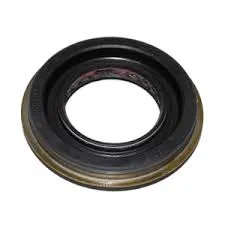7 月 . 25, 2024 05:22 Back to list
Replacement Options and Maintenance Tips for LS2 Valve Cover Gasket Installation and Performance
Understanding the LS2 Valve Cover Gasket
The LS2 engine, a powerhouse known for its durability and performance, has become a popular choice in the automotive aftermarket, especially for modifications and swaps in various vehicles. One crucial component of the LS2 engine is the valve cover gasket, which plays a significant role in maintaining engine integrity and performance. In this article, we will explore the valve cover gasket for the LS2 engine, its importance, common issues, and how to replace it.
What is the Valve Cover Gasket?
The valve cover gasket is a rubber or silicone seal that sits between the valve cover and the cylinder head. Its primary function is to prevent oil leaks from the engine, ensuring that the lubricating oil remains within the oil channels. This gasket also prevents dirt and debris from entering the engine, which is vital for maintaining engine health.
Importance of the Valve Cover Gasket
An effective valve cover gasket is essential for several reasons
1. Oil Containment The gasket creates a tight seal that keeps oil from leaking out of the engine. Oil leaks can lead to low oil levels, which can cause serious engine damage over time.
2. Prevent Contamination A properly functioning gasket will keep contaminants, such as dirt and moisture, from entering the engine, thus protecting internal components.
3. Engine Performance An engine that operates with sufficient oil and without leaks performs better and is more efficient. It prolongs the life of the engine and enhances overall performance.
Common Issues with LS2 Valve Cover Gaskets
Like any other component, the valve cover gasket can wear out or fail over time. Several common issues may arise
- Oil Leaks The most noticeable problem is oil seeping out from under the valve cover. This can create a mess in the engine bay and lead to potential fire hazards if the oil comes into contact with hot engine surfaces.
- Cracking or Shrinking With exposure to heat and oil, rubber or silicone gaskets can degrade, leading to cracks or shrinking. This deterioration compromises the seal and can result in leaks.
ls2 valve cover gasket

- Warpage of the Valve Cover If the valve cover itself is warped due to overheating, it may not seal properly against the gasket, leading to leaks even if the gasket is new.
Replacing the Valve Cover Gasket
If you suspect that your LS2 valve cover gasket is failing, it’s crucial to take action promptly. Here’s a general guide on how to replace it
1. Gather Tools and Materials You will need a new valve cover gasket set, a socket set, torque wrench, and possibly some cleaner for the surfaces.
2. Remove the Engine Components Depending on your vehicle, you may need to remove components such as the intake manifold or coil packs to access the valve covers.
3. Take Off the Valve Cover Using the socket set, remove the bolts holding the valve cover in place. Carefully lift off the cover to avoid damaging the gasket surface.
4. Clean Surfaces Thoroughly clean the mating surfaces on both the valve cover and the cylinder head. Any debris can prevent a proper seal with the new gasket.
5. Install the New Gasket Place the new gasket onto the valve cover, ensuring it sits evenly. Then reposition the cover onto the cylinder head.
6. Torque Specifications Tighten the bolts in a crisscross pattern to the manufacturer’s specified torque settings to ensure an even seal.
7. Reassemble Components Reinstall any parts that were removed, and check for any potential leaks before starting the engine.
Conclusion
The valve cover gasket in the LS2 engine is a small but vital component that plays a significant role in maintaining engine health and performance. Regular maintenance and timely replacement of a failing gasket can save car owners from costly repairs down the road. Whether you’re a seasoned mechanic or a DIY enthusiast, understanding the importance of the valve cover gasket is essential for keeping your LS2 running smoothly.